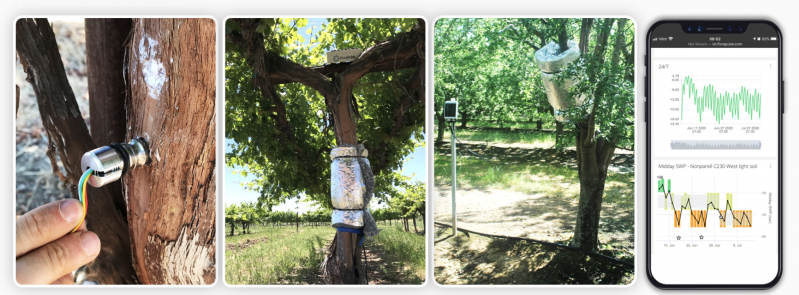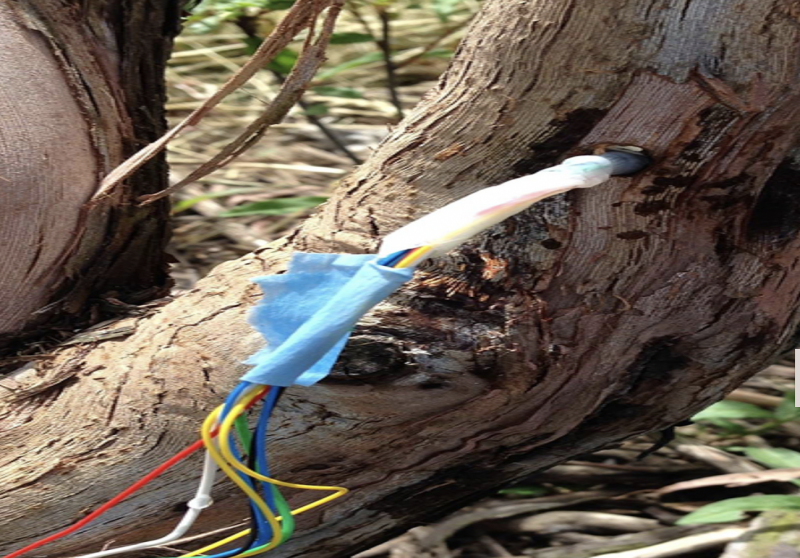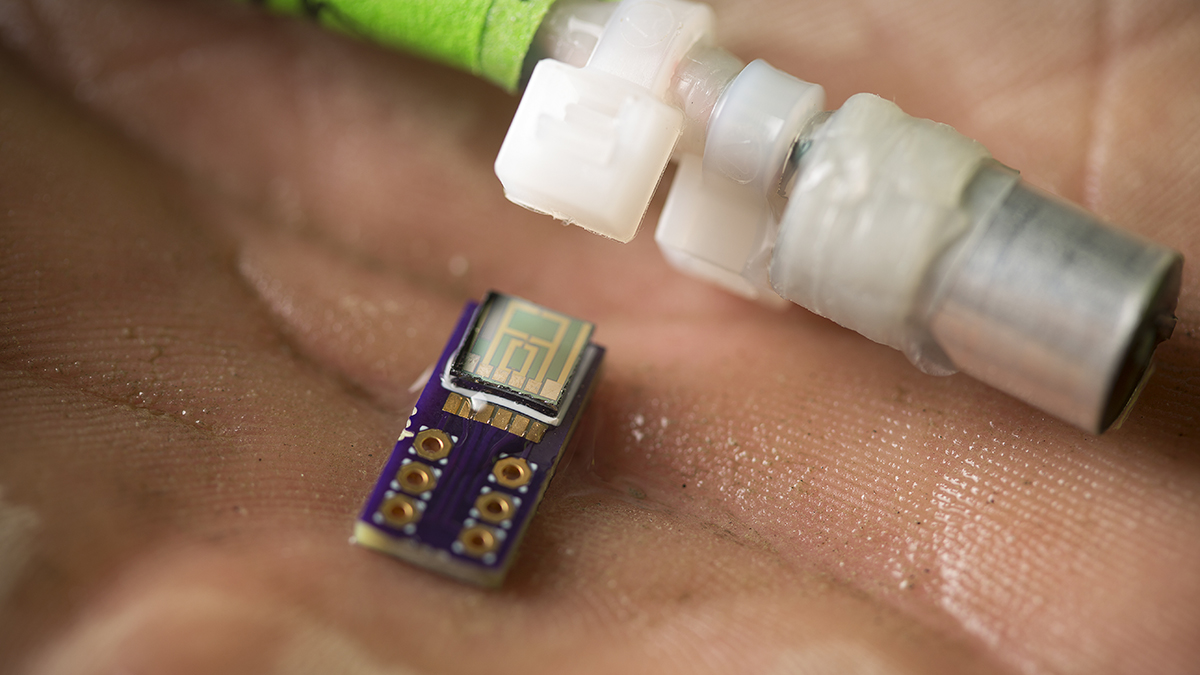This is FloraPulse!
Published on by Water Network Research, Official research team of The Water Network for FloraPulse
FloraPulse has developed a microchip implant that measures the water status of trees directly in the xylem. This information is very important as tree water status has a huge impact on crop yield, quality and health. Come work with us to have a BIG impact in agriculture worldwide, increase yields/quality and save water. Contact us at michael@florapulse.com to learn more.

Water sensor moves from basic research to promising business
Lindsay France/University Photography
Cornell-developed water sensor and probe that inserts into the stem or trunk of a plant.
A water sensor technology that began as basic research at Cornell is blooming into a business that fills a vital need for grape, nut, apple and other growers.

While current water sensing tools are expensive, inaccurate or labor intensive, the new sensor tells growers when their plants need irrigation with accurate, real-time readings at reasonable cost.
Much like a blood pressure gauge for humans, the sensor reads the water pressure inside the plant. When plants are thirsty, their water pressure is low, sometimes even negative. The sensor reads this pressure inside the plant to help growers ensure plant health and optimize water use in drought-stricken agricultural areas. Applying water at the right time can also greatly improve the quality of fruits, nuts and especially grapes for red wines.
In mid-2016, Cornell engineers and horticulturalists who developed the sensor launched FloraPulse, a startup aimed at commercializing the sensor and using it to provide agricultural services. The first target markets are grape and nut growers in California’s Central and Napa valleys.
“We’re developing a service for growers to know exactly when, where and how much to irrigate,” said Michael Santiago, Ph.D. ’16, entrepreneurial lead for FloraPulse and a postdoctoral researcher in the lab of Abraham Stroock, the project’s principal investigator. Santiago helped develop the technology while pursuing his doctorate in Stroock’s lab.
In 2009, Stroock, director of the Robert Frederick Smith School of Chemical and Biomolecular Engineering, and Alan Lakso, professor emeritus of horticulture, began development of a microsensor using new technologies developed in Stroock’s lab. The sensor, made in the Cornell NanoScale Science & Technology Facility (CNF), is a silicon chip with a tiny cavity that holds water. When the chip is embedded in a plant with drought stress, water leaves this cavity through a nanoporous membrane and the resulting tension is turned into an electrical signal.
A sensor installed in the trunk of a grapevine. After the installation of the sensor, the researchers cover and insulate the trunk.
Over the past three years, the Cornell team developed a prototype of a commercial water sensor with a fingertip-sized chip and a probe for inserting into plant stems.
The sensor is compatible with electronic plug-and-play readers that are the industry standard for billions of sensors, including tire pressure sensors in today’s cars, for example. This compatibility extends to wireless integration that is rapidly transforming agricultural practice.
